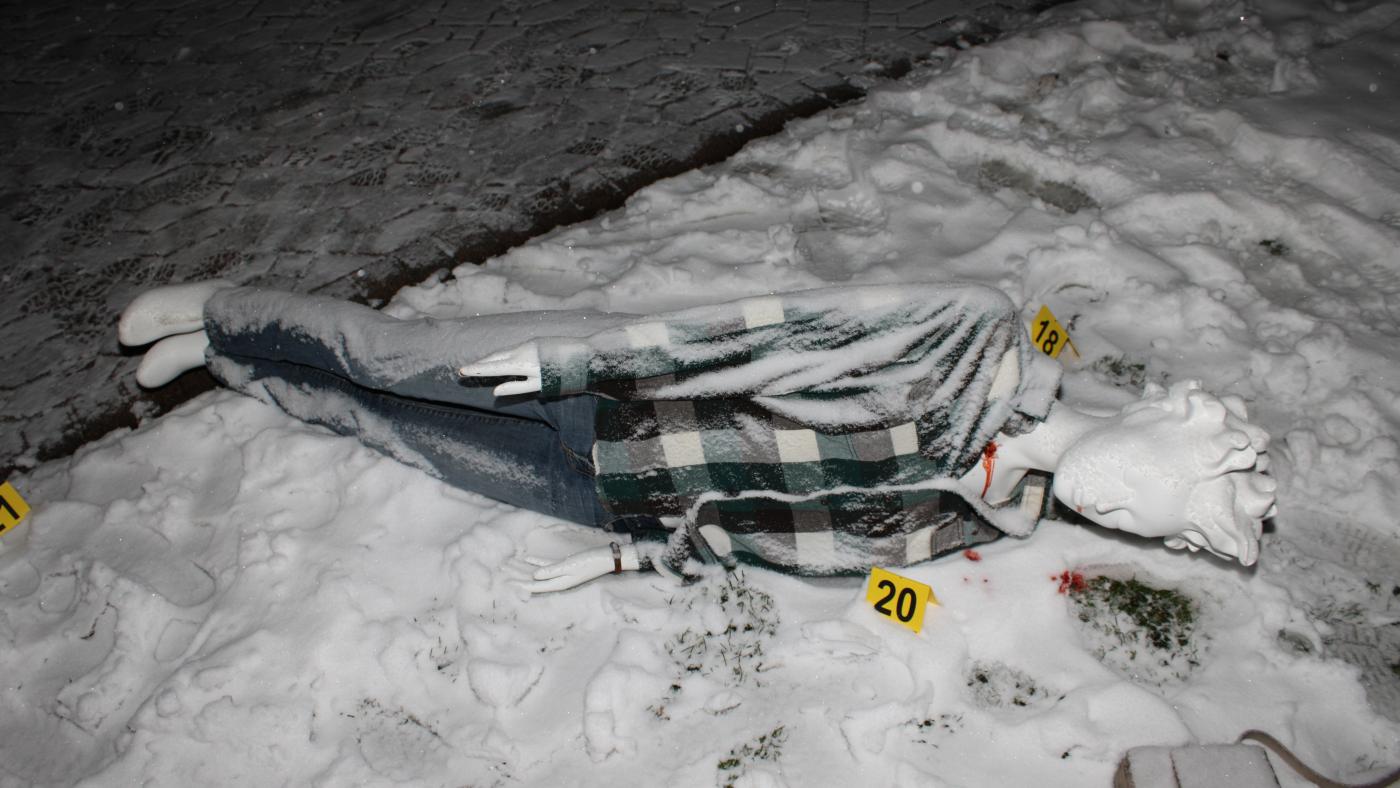Understanding Crime Scene Evidence Through Photography: A Comprehensive Guide
Crime scene evidence is crucial in criminal investigations, and photography plays a vital role in documenting this evidence. The use of crime scene photos not only aids in the investigation but also serves as an essential tool in court proceedings. In this article, we will explore the significance of crime scene photos, the techniques used in capturing them, and the legal implications surrounding their use. By the end of this guide, you'll have a clearer understanding of the importance of photographic evidence in the realm of criminal justice.
Photography has evolved significantly over the years, becoming an integral part of the forensic process. Modern advancements in technology have allowed for more detailed and accurate representation of crime scenes. This article will delve into various aspects of crime scene photography, including best practices, common challenges, and the role of photographers in the field. Whether you are a student of criminal justice, a professional in the field, or simply interested in understanding the process, this article will provide valuable insights.
As we navigate through this topic, we will highlight the importance of expertise, authority, and trustworthiness in the context of crime scene documentation. Understanding these principles will not only enhance your knowledge but also ensure a greater appreciation for the meticulous work involved in capturing crime scene evidence through photography.
Table of Contents
- 1. The Role of Photography in Crime Scene Investigation
- 2. Best Practices for Crime Scene Photography
- 3. Common Challenges in Crime Scene Photography
- 4. Types of Crime Scene Photography
- 5. Legal Implications of Crime Scene Photos
- 6. Case Studies: The Impact of Photography on Criminal Cases
- 7. Future Trends in Crime Scene Photography
- 8. Conclusion
1. The Role of Photography in Crime Scene Investigation
Photography serves as a fundamental component of crime scene investigation. It provides a visual record of the scene, which can be critical for reconstructing events and understanding the context of the crime. The primary roles of crime scene photography include:
- Documenting the scene in its original state
- Preserving evidence for future analysis
- Providing visual support during court proceedings
- Aiding investigators in analyzing the crime scene
Effective crime scene photography requires a keen eye and an understanding of the principles of composition, lighting, and perspective. Photographers must also be skilled in using various camera equipment to capture high-quality images.
2. Best Practices for Crime Scene Photography
To ensure that crime scene photos are useful and admissible in court, photographers should adhere to several best practices:
- Start with wide-angle shots to capture the entire scene.
- Use a scale or ruler in photos to provide a sense of size and distance.
- Capture close-up images of specific evidence.
- Document the scene from multiple angles.
- Maintain a consistent photographic style for all evidence.
These practices help create a comprehensive visual narrative that can be easily understood by investigators and jurors alike.
3. Common Challenges in Crime Scene Photography
Crime scene photography comes with its set of challenges. Some common issues include:
- Poor lighting conditions
- Environmental factors such as weather or crowds
- Emotional stress of the situation
- Preserving the integrity of the scene while capturing images
Photographers must develop strategies to overcome these challenges while ensuring that the evidence is documented accurately.
4. Types of Crime Scene Photography
Crime scene photography can be categorized into different types, each serving a specific purpose:
4.1. Overview of Different Types
- Overall Photos: Captures the entire scene from various angles.
- Mid-Range Photos: Focuses on specific areas of interest.
- Close-Up Photos: Highlights specific pieces of evidence.
4.2. Night Photography Techniques
Photographing crime scenes at night presents unique challenges. Photographers must utilize techniques such as:
- Using flash and external light sources
- Adjusting camera settings for low-light conditions
- Utilizing long exposure times for better clarity
5. Legal Implications of Crime Scene Photos
The admissibility of crime scene photos in court can greatly impact a case. Key legal considerations include:
- Chain of custody: Ensuring that evidence is preserved and documented properly.
- Relevance: Photos must be directly related to the case.
- Accuracy: Images must accurately represent the crime scene.
Understanding these legal implications is crucial for photographers working in the field.
6. Case Studies: The Impact of Photography on Criminal Cases
Numerous cases have demonstrated the pivotal role that crime scene photography plays in the judicial process. Some notable examples include:
- The O.J. Simpson trial, where photographs were critical in establishing timelines.
- The JonBenét Ramsey case, where images provided insights into the crime scene.
These case studies illustrate how effective photography can influence the outcomes of high-profile criminal cases.
7. Future Trends in Crime Scene Photography
The field of crime scene photography is continuously evolving. Emerging trends include:
- Integration of drones for aerial photography
- Use of 3D scanning technology for virtual reconstructions
- Artificial intelligence for image analysis and evidence sorting
These advancements promise to enhance the accuracy and efficiency of crime scene documentation.
8. Conclusion
In conclusion, crime scene photography is an indispensable tool in the field of criminal justice. It not only aids in the investigation but also serves as vital evidence in court. By adhering to best practices and understanding the legal implications, photographers can contribute significantly to the resolution of criminal cases. If you found this article informative, please leave a comment below, share it with others, or explore more articles on our site.
We hope this guide has provided you with a deeper understanding of crime scene photography and its critical role in the justice system. Thank you for reading, and we invite you to return for more insightful content!
Exploring Gypsy Rose Crime Scene Photos: A Deep Dive Into The Controversial Case
Janet Smollett: A Deep Dive Into The Life Of A Notable Figure
Angie Janu: A Deep Dive Into The Life And Career Of A Talented Actress


